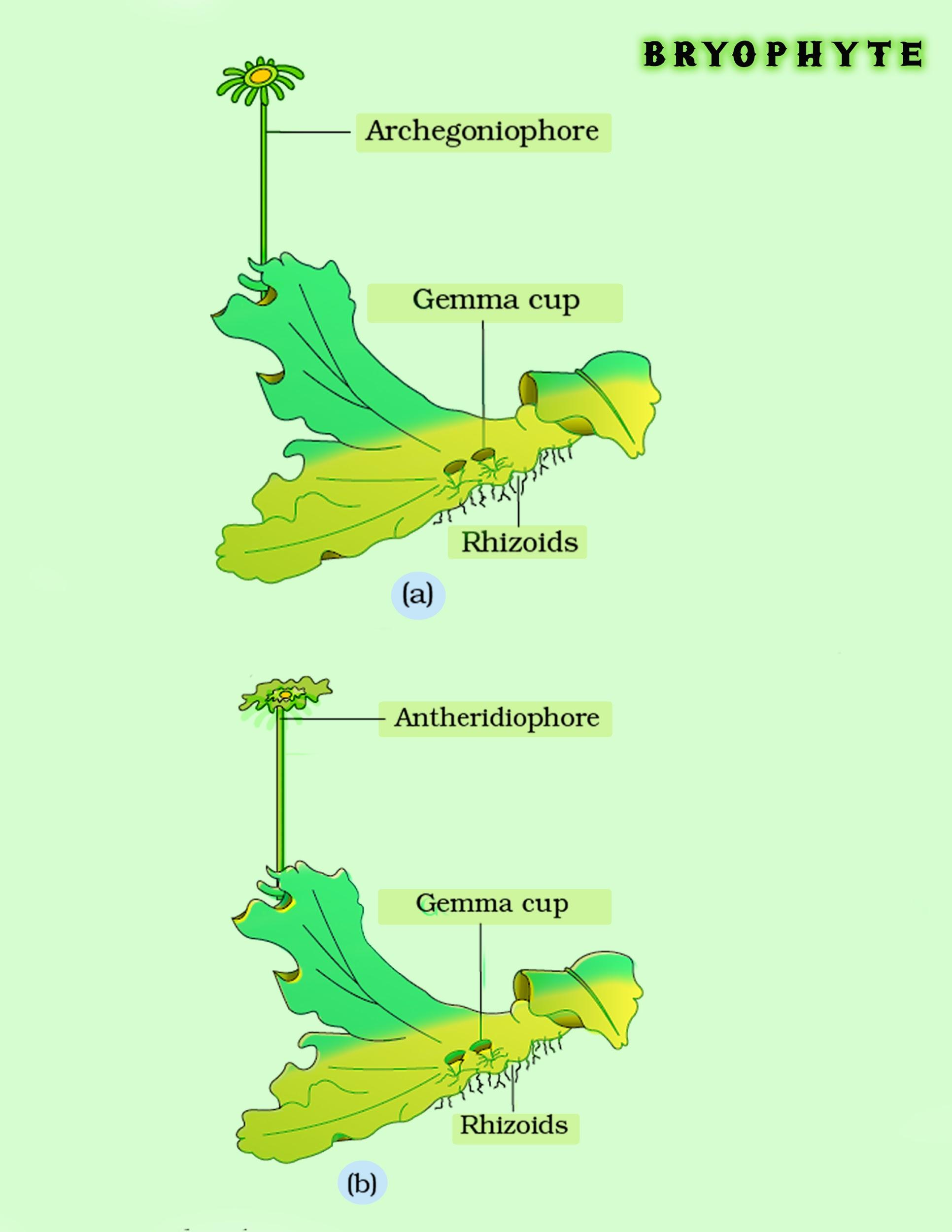
Reproduction in bryophytes takes place by
(This question has multiple correct options)
(a)Gemma cup formation
(b)Sexual method
(c)Fission
(d)Parthenogenesis
Answer
488.4k+ views
5 likes
Hint: Reproduction is bryophytes takes place by both asexual and sexual method. The sexual method is highly dependent on water for the transfer of gametes and hence they are known as the amphibians of the plant world.
Complete answer:
Asexual reproduction in bryophytes takes place by fragmentation or by the formation of gemma cups. Gemmae are green, multicellular, and asexual buds that are borne on the thalli of the parent. They are enclosed inside gemma cups. These gemmae fall off from the plant body and germinate to give rise to a new plant.
Sexual reproduction in bryophytes is as follows:
The plant body is thallus-like, erect, and attached to the substratum by unicellular or multicellular rhizoids. The main plant body of the bryophyte is called gametophyte as it produces gametes (haploid). The sex organs in bryophytes are multicellular. The male sex organ is called the antheridium which is responsible for producing biflagellate antherozoids. The female sex organ is archegonium and produces a single egg. The antherozoids are released into the water where they come in contact with archegonium and fuse with the egg to produce the zygote. Zygotes do not show the reduction division immediately, instead produce a multicellular body called a sporophyte. The sporophyte is attached to the photosynthetic gametophyte and derives nourishment from it. Some cells of the sporophyte undergo reduction division (meiosis) to produce haploid spores which germinate to give the gametophyte again.
So, the correct option is ‘Sexual method’ and ‘Gemma cup formation’.
Note: -Bryophytes are divided into mosses and liverworts.
-Sphagnum moss is used to ship living beings because of their ability to hold water in them.
-Moss and lichens are known as pioneer species as they are the first to start an ecosystem in a barren land i.e. primary succession.

Complete answer:
Asexual reproduction in bryophytes takes place by fragmentation or by the formation of gemma cups. Gemmae are green, multicellular, and asexual buds that are borne on the thalli of the parent. They are enclosed inside gemma cups. These gemmae fall off from the plant body and germinate to give rise to a new plant.
Sexual reproduction in bryophytes is as follows:
The plant body is thallus-like, erect, and attached to the substratum by unicellular or multicellular rhizoids. The main plant body of the bryophyte is called gametophyte as it produces gametes (haploid). The sex organs in bryophytes are multicellular. The male sex organ is called the antheridium which is responsible for producing biflagellate antherozoids. The female sex organ is archegonium and produces a single egg. The antherozoids are released into the water where they come in contact with archegonium and fuse with the egg to produce the zygote. Zygotes do not show the reduction division immediately, instead produce a multicellular body called a sporophyte. The sporophyte is attached to the photosynthetic gametophyte and derives nourishment from it. Some cells of the sporophyte undergo reduction division (meiosis) to produce haploid spores which germinate to give the gametophyte again.
So, the correct option is ‘Sexual method’ and ‘Gemma cup formation’.
Note: -Bryophytes are divided into mosses and liverworts.
-Sphagnum moss is used to ship living beings because of their ability to hold water in them.
-Moss and lichens are known as pioneer species as they are the first to start an ecosystem in a barren land i.e. primary succession.

Latest Vedantu courses for you
Grade 10 | CBSE | SCHOOL | English
Vedantu 10 CBSE Pro Course - (2025-26)
School Full course for CBSE students
₹35,000 per year
Recently Updated Pages
Express the following as a fraction and simplify a class 7 maths CBSE

The length and width of a rectangle are in ratio of class 7 maths CBSE

The ratio of the income to the expenditure of a family class 7 maths CBSE

How do you write 025 million in scientific notatio class 7 maths CBSE

How do you convert 295 meters per second to kilometers class 7 maths CBSE

Write the following in Roman numerals 25819 class 7 maths CBSE

Trending doubts
State and prove Bernoullis theorem class 11 physics CBSE

What are Quantum numbers Explain the quantum number class 11 chemistry CBSE

Write the differences between monocot plants and dicot class 11 biology CBSE

1 ton equals to A 100 kg B 1000 kg C 10 kg D 10000 class 11 physics CBSE

State the laws of reflection of light

In northern hemisphere 21st March is called as A Vernal class 11 social science CBSE




